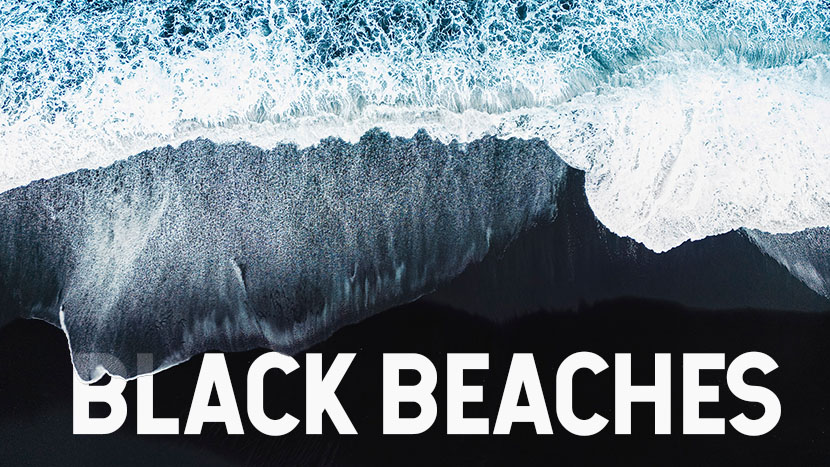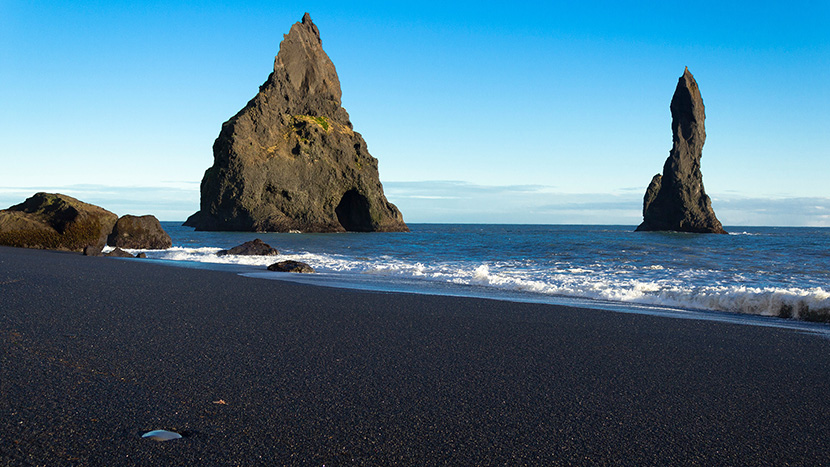Black Beach Wonders: Nature’s Rare Coastal Treasures
Nestled along coastlines across the globe, black beaches cast a spellbinding charm that captivates the imagination of travelers and locals alike. Unlike the more traditional golden or white sandy shores, these enigmatic beaches boast a distinctive dark hue, drawing visitors with their mysterious allure.
The intriguing contrast of black sands against the turquoise waters of the sea creates a mesmerizing landscape that leaves an indelible impression on those who set foot on their shores.
The sight of these dark sands has sparked folklore, legends, and myths in many cultures, adding to their mystique. From volcanic islands to secluded coves, black beaches are shrouded in tales of ancient mysteries and untold secrets, making them a treasure trove for beachcombers and adventurers.
Finding a black beach by chance on your adventures feels like winning at slots for real money in a casino, but we think that black beaches might offer even more excitement and satisfaction for those seeking thrilling experiences.
What are Black Beaches?
Black beaches, also known as volcanic beaches or dark sand beaches, are coastal stretches adorned with sands of dark, often black, hues. Black beaches derive their unique coloration from distinct geological processes and materials. The allure of these beaches lies not only in their striking appearance but also in the fascinating stories they hold about natural phenomena.
One of the defining characteristics of black beaches is their rarity. While golden and white beaches are widespread, black beaches are comparatively less common. The geological factors that create these dark sands contribute to their magnetism, drawing in travelers and researchers alike to uncover the secrets of their formation.
The dark coloration of black beaches can be attributed to the presence of specific materials, which differ based on the beach’s geological origins. Some of the key materials responsible for their dark hues include:
- Volcanic Basalt: In regions with active or dormant volcanoes, volcanic activity plays a significant role in black beach formation. The lava erupted by volcanoes is composed mainly of basalt, an iron and magnesium-rich volcanic rock. As the lava cools and solidifies upon reaching the ocean, it breaks down into fine particles that form the dark sands characteristic of volcanic black beaches.
- Minerals: Some black beaches owe their coloration to the presence of minerals like magnetite and ilmenite. These minerals contain high levels of iron and titanium, imparting dark colors to the sand. As rocks containing these minerals erode over time, the grains are carried by rivers and deposited on the coastlines, creating mineral-rich black beaches.
- Biogenic Materials: Certain black beaches owe their dark sands to the accumulation of organic materials from marine life, such as corals, shells, and algae. The remains of marine organisms and decomposed plant matter contribute to the dark coloration, creating biogenic black beaches.
The Role of Volcanic Activity in the Formation of Black Beaches
Black beaches are the result of a number of geological processes, many of which are influenced by volcanic activity, which is crucial in the formation of these distinctive coastal landscapes. Molten lava, gases, and volcanic ash are all ejected onto the Earth’s surface during a volcano eruption.
The key to how black beaches are created is, in particular, the lava. This molten rock cools quickly as it travels toward the ocean, solidifying and breaking into tiny pieces as it comes into contact with the sea.
Over time, wave action and other coastal processes grind these fragments into finer particles, ultimately forming the dark, black sands characteristic of volcanic beaches.
Notable Examples of Black Beaches Formed by Volcanic Processes
- Reynisfjara, Iceland, one of Iceland’s most famous black beaches, is situated near the small village of Vík. The dark sand is a result of the erosion and weathering of basaltic lava from nearby volcanoes, creating a striking contrast against the roaring North Atlantic waves.
- Punalu’u Beach in Hawaii is known for its luxuriant palm trees and black sand. Punalu’u Beach is situated on the southeast coast of Hawaii. Due to its characteristic black sand, the beach is a favorite among both locals and visitors looking for a distinctive Hawaiian beach experience.
- Anse Céron, lies nestled on the Caribbean island of Martinique. It boasts dramatic scenery with its volcanic black sands framed by lush greenery. The beach’s dark sand primarily consists of volcanic minerals, providing a stark contrast against the crystal-clear waters of the Caribbean Sea.
Cultural Significance of Black Beaches
Black beaches hold immense cultural significance in various regions around the world, often weaving folklore and legends that contribute to their allure. In many cultures, these dark sands are associated with stories of ancient spirits, gods, or mystical creatures, adding a sense of mystery and enchantment to these coastal landscapes.
For example, in Icelandic folklore, black beaches are believed to be the remnants of a great battle between trolls and the rays of the sun. The striking basalt columns and black sands of Reynisfjara are said to be the petrified remains of trolls who were caught by the first rays of dawn.
Black sand beaches are revered in Hawaiian culture and are frequently linked to Pele, the volcano goddess. The force and fiery essence of Pele are thought to be represented by the black sand, which heightens the spiritual significance of these beaches.
Environmental Importance of Preserving These Unique Ecosystems
These unique ecosystems provide habitat for a diverse array of flora and fauna specially adapted to the harsh conditions of volcanic landscapes. Coastal vegetation that thrives on black beaches helps stabilize the sandy shoreline, preventing erosion and protecting against storm surges.
Furthermore, black beaches often serve as nesting grounds for endangered sea turtles, such as the green and hawksbill turtles, making them crucial sites for conservation efforts. Preserving these beaches ensures the survival of these species and contributes to the overall biodiversity of coastal environments.
In several places, conservation efforts are in place to safeguard black beaches and the areas around them. To adopt sustainable tourist practices and spread awareness of the ecological significance of these beaches, local communities, environmental organizations, and government organizations work together.
Through collective action and appreciation for the Earth’s natural wonders, we can ensure that black beaches continue to captivate and intrigue us for years to come. Embracing the stories etched in black sands, let’s embrace our role as stewards of our planet’s geological treasures and cherish the magic of these coastal landscapes.


































































































